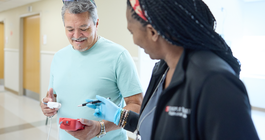
February 15, 2021
 Nowaja/Pixabay
Nowaja/Pixabay
Because carbon monoxide is hard to detect, it is important to have a carbon monoxide detector installed in your home and to make sure your heater, fireplace and all appliances are inspected regularly.
Accidental carbon monoxide poisoning sends about 50,000 U.S. residents to emergency departments every year, killing more than 400 of them.
With the coronavirus pandemic keeping people indoors more often, it is particularly important that people know how to protect themselves from this silent killer. The winter months can be particularly dangerous because cold temperatures force heating systems to run for hours, increasing the risk of carbon monoxide poisoning.
On Valentine's Day weekend, a carbon monoxide exposure left one man dead and another in critical condition in Camden, New Jersey. An initial investigation suggests that a malfunctioning heater may be to blame, 6ABC reports.
Carbon monoxide is a colorless, tasteless and odorless gas that at high levels can lead people to lose consciousness or even die. It is found in fumes produced by furnaces, gas stoves, water heaters, gas dryers and space heaters not properly ventilated. It also is produced by burning charcoal or wood indoors.
Because this deadly gas is hard to detect, it is important to have a carbon monoxide detector installed in your home and to make sure your heater and appliances are properly ventilated.
Poisoning can happen after a short exposure to high levels or low levels over a longer period of time. Symptoms include headache, nausea, vomiting, dizziness, drowsiness, muscle weakness, chest pain, confusion and loss of consciousness, according to the U.S. Centers for Disease Control and Prevention.
The body's red blood cells pick up carbon monoxide faster than oxygen, scientists explain. When people are exposed to the gas, their bodies starts replacing oxygen in the blood with carbon monoxide. People who are sleeping or who have been drinking alcohol can die from the poisoning before experiencing any symptoms.
Seniors over 65 years of age have a higher risk of carbon monoxide poisoning. Certain occupations also are at higher risk, including taxi drivers, garage mechanics, toll booth and tunnel attendants, police officers and firefighters.
A person experiencing carbon monoxide poisoning needs to receive fresh air immediately and should be evaluated by a doctor.
Use this checklist compiled from the CDC, City of Philadelphia and the National Safety Council to keep yourself and your loved ones safe this winter.
1. Make sure you have a working carbon monoxide detector on every level of your home. Change the batteries every six months.
2. Get all fuel-burning appliances inspected regularly.
3. Never use a charcoal grill, lantern or camping portable stove indoors. Don't use a gas range or oven to heat a home.
4. Don't leave a car running in the garage, even if the door is open.
5. If you lose power in a storm, always run any generators a safe distance from the home and away from windows, doors and vents.
6. Anyone with a working fireplace should keep the chimney clean and free of trash.